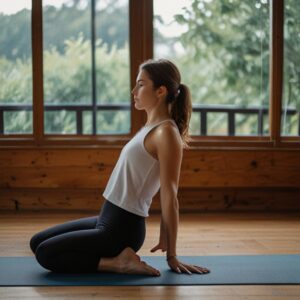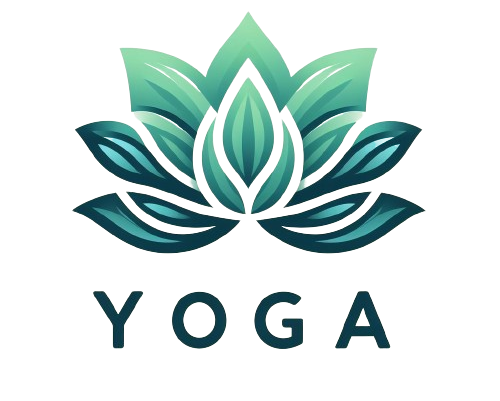Ever find yourself slouching in front of your computer or phone? Yeah, I’m guilty too. Poor posture is pretty common these days, especially with all the time we spend staring into screens. But there’s good news: yoga can help. That’s right! Little tweaks to your yoga routine can turn your posture from meh to mighty.
Why Yoga for Posture?

Strengthens Core Muscles: one of the primary advantages of practicing yoga is that it focuses intensely on building core strength. The core isn’t just about your abs, it encompasses the muscles surrounding your spine, your pelvis, and even your diaphragm. A strong core acts like a solid foundation for your entire body, allowing you to stand taller and maintain better alignment without excessive effort. When your core muscles are robust, they effectively support your spine and pelvis, reducing the risk of hunching over or slouching.
Enhances Flexibility: flexibility is another benefit gained from yoga practice. Tight muscles can pull your body out of alignment, causing imbalances that lead to poor posture. Regular stretching through yoga poses helps to elongate tight muscles, particularly in areas like the chest, shoulders, and hips. Increased flexibility in these muscles reduces the strain on your back and neck, allowing your body to maintain a more natural and upright position without discomfort.
Improves Body Awareness: yoga fosters mindfulness, a heightened sense of awareness of both your body and mind. As you practice different yoga poses, you become more attuned to the subtleties of your body—like how it feels when you are aligned correctly versus when you are not. This improved body awareness carries over into your daily life, making you more conscious of how you sit, stand, and move throughout the day. Over time, these mindful habits lead to better posture both on and off the mat.
Reduces Stress: stress affects your mental well-being and takes a toll on your physical body. When you’re stressed, your muscles tend to tense up, particularly in areas like the shoulders, neck, and lower back. This tension can lead to misalignment and poor posture. Yoga incorporates deep-breathing techniques and relaxation exercises that help reduce stress levels, encouraging muscle relaxation and better alignment.
Essential Yoga Poses to Fix Posture
Mountain Pose (Tadasana)
This one’s a basic staple. Don’t underestimate its power.
- Stand with feet together.
- Ground down through your feet.
- Engage your thighs and lift your kneecaps.
- Draw in your abs and broaden your chest.
- Reach both arms upward with palms facing each other.
- Hold for 30-60 seconds while breathing deeply.
Why it helps: Mountain pose sets a foundation for aligning your body well.
Cat-Cow (Marjaryasana-Bitilasana)
A two-for-one deal here! A great warm-up move.
- Start on all fours, wrists under shoulders, knees under hips.
- Inhale as you arch your back (Cow pose).
- Exhale and round your spine upward (Cat pose).
- Continue for 1-2 minutes, flowing with your breath.
Downward Facing Dog (Adho Mukha Svanasana)
Classic and super effective.
- Start on all fours, tuck your toes.
- Lift your hips to form an inverted V shape.
- Keep your head between your upper arms.
- Elongate through your spine and legs.
- Hold for 30-60 seconds.
Cobra Pose (Bhujangasana)
Strengthen that back of yours.
- Lie face down with legs extended behind.
- Place hands under your shoulders.
- Press into your hands and lift your chest off the floor.
- Keep your elbows tight to your body.
- Hold for 15-30 seconds.
Plank Pose (Phalakasana)
Good ol’ plank. It’s a core-blaster.
- Start on all fours.
- Extend legs back and come onto your toes.
- Hands under shoulders, creating a straight line from head to heels.
- Hold for 30-60 seconds.
Bridge Pose (Setu Bandhasana)
Work that butt and lower back.
- Lie on your back, bend your knees, feet hip-width apart.
- Press feet and arms into the floor.
- Lift your hips toward the sky.
- Hold for 15-30 seconds.
Quick Tips to Complement Your Yoga Practice
While consistency is key to reaping the benefits of yoga, there are additional practical steps you can take to further enhance your posture. Integrating these quick tips into your daily routine can help you maintain better alignment and reduce the physical strain caused by poor posture.
Make a conscious effort to sit up straight, if you’re at work or relaxing at home. To help with this, consider placing reminders in visible spots, such as on your desk, your computer screen, or your phone. These gentle prompts can serve as a useful nudge to correct your posture throughout the day.
It’s easy to get absorbed in tasks and forget to move, especially if you work at a desk. To combat this, make it a habit to stand up, stretch, and move around every 30 minutes. Set an alarm or use an app designed to remind you to take these crucial breaks. Simple movements and stretches can alleviate tension and prevent muscle fatigue.
Throughout the day, periodically check in with your body to assess your posture. Are you hunching over your keyboard or leaning to one side? Make the necessary adjustments to sit or stand tall. Self-awareness plays a crucial role in developing and maintaining good posture habits.
While yoga offers numerous benefits for posture, incorporating strength training into your fitness regimen can provide additional support. Strong muscles, especially in areas like the back, shoulders, and core, help stabilize your body and maintain proper alignment. Consider integrating exercises like weightlifting, resistance band workouts, or bodyweight exercises into your weekly routine. This balanced approach will enhance muscle tone and improve overall body support, making it easier to maintain good posture.
